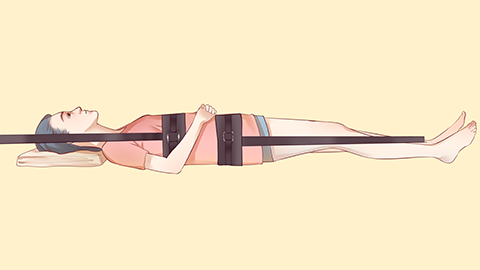How to cure lumbar disc herniation permanently
Lumbar disc herniation usually refers to lumbar disc herniation syndrome. Generally speaking, there is no such concept as "how to completely cure lumbar disc herniation." Treatment methods for lumbar disc herniation mainly include conservative management, physical therapy, medication, traditional Chinese medicine (TCM), and surgical treatment. Specific details are as follows:
1. Conservative Management
During the acute phase, patients should rest in bed and use a mattress of moderate firmness to reduce pressure on the lumbar spine. They should avoid prolonged sitting or standing and refrain from bending over to lift heavy objects. During remission, patients should adjust daily postures to maintain the natural physiological curvature of the lumbar spine. Additionally, strengthening back and core muscles through targeted exercises can improve spinal stability and reduce recurrence.

2. Physical Therapy
Physical therapy uses gentle methods to relieve lower back pain and muscle tension. Common techniques include lumbar traction, heat therapy, and low-frequency pulsed electrotherapy. Lumbar traction helps widen the intervertebral space and reduce disc pressure on nerve roots. Heat application improves local blood circulation and relieves muscle spasms. Low-frequency electrical stimulation can modulate nerve and muscle activity, reducing pain and aiding functional recovery.
3. Medication
Medications help alleviate symptoms and control inflammation, and should be taken under medical supervision. For significant pain, nonsteroidal anti-inflammatory drugs (NSAIDs) such as ibuprofen sustained-release capsules or celecoxib capsules may be prescribed. Patients with muscle spasms may benefit from muscle relaxants like eperisone hydrochloride tablets. If nerve root compression causes numbness, neurotrophic agents such as mecobalamin tablets can support nerve repair and functional recovery.
4. Traditional Chinese Medicine (TCM)
According to TCM, lumbar disc herniation is associated with "deficiency of liver and kidney, and stagnation of qi and blood." Treatment focuses on promoting blood circulation, removing blood stasis, unblocking meridians, relieving pain, and tonifying the liver and kidneys. Under medical guidance, patients may take proprietary Chinese medicines such as Yaotongning Capsules or Shujin Jianyao Pills, combined with acupuncture and massage. Acupuncture stimulates specific points to unblock meridians, while massage helps realign lumbar joints, relieve muscle tension, and reduce disc compression.
5. Surgical Treatment
Surgery should be considered when conservative treatments fail, symptoms severely affect quality of life, or neurological complications such as leg muscle weakness or bladder/bowel dysfunction occur. A common procedure is transforaminal endoscopic discectomy, a minimally invasive surgery to remove the protruding nucleus pulposus and relieve nerve compression. For patients with lumbar instability, lumbar fusion surgery may be required—implanting a cage to stabilize the spine. Postoperative rehabilitation should be conducted gradually under medical supervision.
In addition, during treatment, patients should undergo regular follow-up exams as directed by their physician to monitor spinal condition. Daily precautions include keeping the lower back warm to prevent chilling, avoiding maintaining the same posture for long periods, and engaging in appropriate movement of the waist. If symptoms such as increased pain or worsening leg numbness occur, prompt medical consultation is necessary to adjust the treatment plan.




